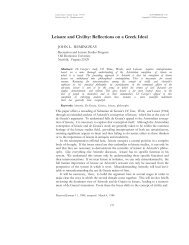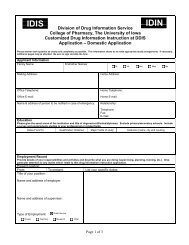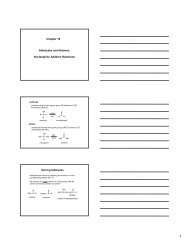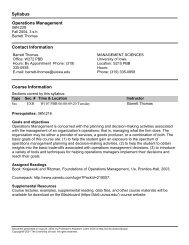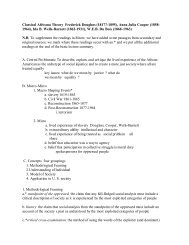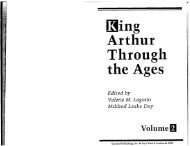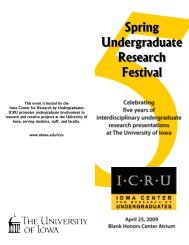Twenty-Five Years of Batson: An Introduction to ... - University of Iowa
Twenty-Five Years of Batson: An Introduction to ... - University of Iowa
Twenty-Five Years of Batson: An Introduction to ... - University of Iowa
Create successful ePaper yourself
Turn your PDF publications into a flip-book with our unique Google optimized e-Paper software.
2012] TWENTY-FIVE YEARS OF BATSON 1401<br />
constraint on the principle that the government “ordinarily is entitled <strong>to</strong><br />
exercise . . . peremp<strong>to</strong>ry challenges ‘for any reason at all.’” 66 Put simply, “the<br />
Equal Protection Clause forbids . . . challenge[s <strong>to</strong>] potential jurors solely on<br />
account <strong>of</strong> their race or on the assumption that black jurors as a group will<br />
be unable impartially <strong>to</strong> consider the State’s case against a black<br />
defendant.” 67<br />
According <strong>to</strong> the Court, Swain recognized that the equal protection<br />
guarantee prevented the government from perverting peremp<strong>to</strong>ry<br />
challenges in<strong>to</strong> a <strong>to</strong>ol for denying blacks opportunities <strong>to</strong> serve. 68 The defect<br />
in that decision was procedural—it had “placed on defendants a crippling<br />
burden <strong>of</strong> pro<strong>of</strong>” and had effectively “immun[ized peremp<strong>to</strong>ries] from<br />
constitutional scrutiny. 69 Post-Swain decisions had established “that a<br />
defendant [could] make a prima facie showing <strong>of</strong> purposeful racial<br />
discrimination in selection <strong>of</strong> the venire by relying solely on the facts . . . in<br />
his case.” 70 Pro<strong>of</strong> <strong>of</strong> a pattern <strong>of</strong> discrimination was unnecessary because an<br />
individual who suffers discrimination is denied equal protection whether or<br />
not the government discriminated against others. 71 The <strong>Batson</strong> majority<br />
found no reason not <strong>to</strong> extend these venire-selection principles <strong>to</strong> the petit<br />
jury selection process—and more specifically, <strong>to</strong> a prosecu<strong>to</strong>r’s use <strong>of</strong><br />
peremp<strong>to</strong>ries. 72 Directly contravening Swain, the Court held “that a<br />
defendant may establish a prima facie case <strong>of</strong> purposeful discrimination in<br />
selection <strong>of</strong> the petit jury solely on evidence concerning the prosecu<strong>to</strong>r’s<br />
exercise <strong>of</strong> peremp<strong>to</strong>ry challenges at [his] trial.” 73<br />
To establish a prima facie case, an accused “first must show that he is a<br />
member <strong>of</strong> a cognizable racial group . . . and that the prosecu<strong>to</strong>r has” used<br />
peremp<strong>to</strong>ries <strong>to</strong> remove members <strong>of</strong> the accused’s race. 74 The defendant<br />
may then rely on the indisputable proposition that peremp<strong>to</strong>ry challenges<br />
enable discrimination by those inclined <strong>to</strong> discriminate. 75 “Finally, the<br />
defendant must show that these facts and any other relevant circumstances<br />
raise an inference” <strong>of</strong> juror exclusion “on account <strong>of</strong> their race.” 76 Judges<br />
66. Id. (quoting United States v. Robinson, 421 F. Supp. 467, 473 (D. Conn. 1976))<br />
(internal quotation marks omitted).<br />
67. Id.<br />
68. Id. at 91.<br />
69. Id. at 92–93.<br />
70. Id. at 95.<br />
71. Id. at 95–96.<br />
72. Id. at 96.<br />
73. Id.<br />
74. Id.<br />
75. Id.<br />
76. Id.





